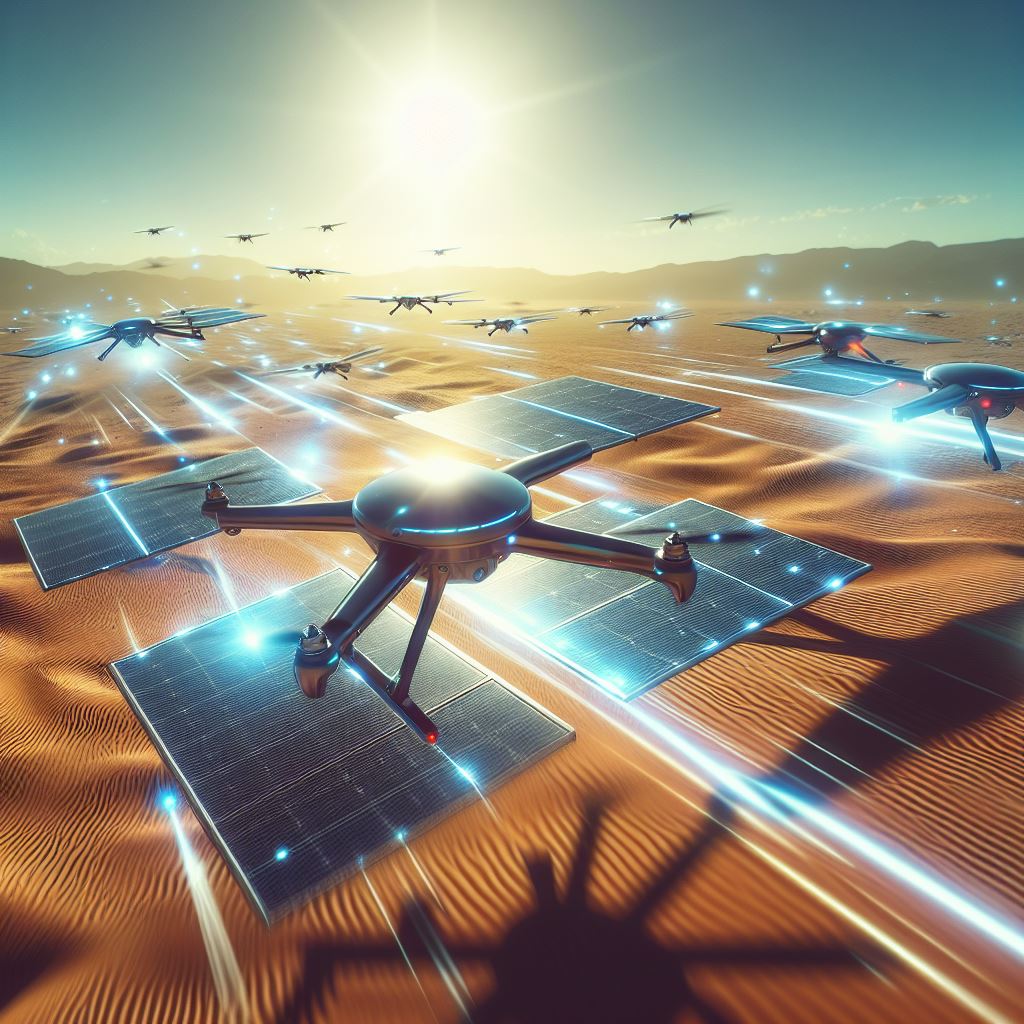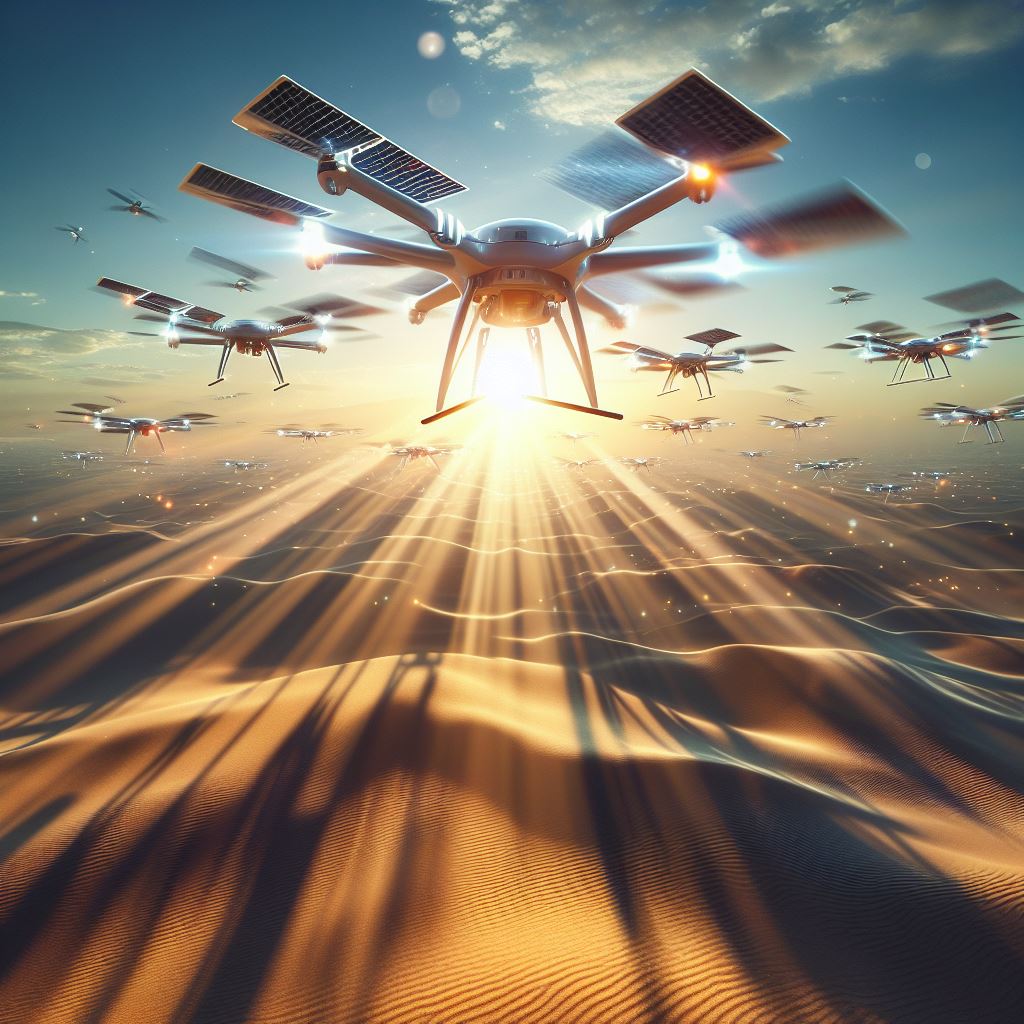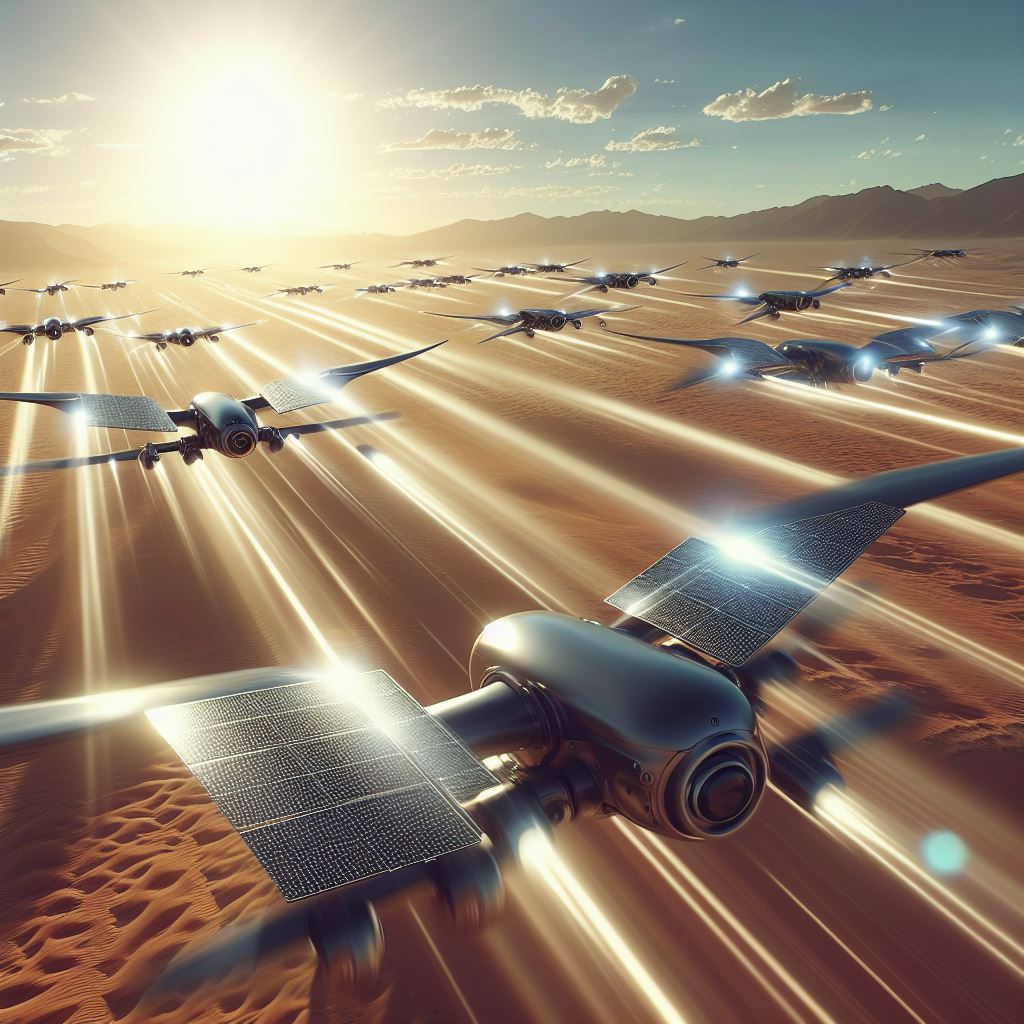Aerial technology has emerged as a key player in various sectors. Among these innovative feats is the introduction of solar-powered drones, a remarkable fusion of drone technology and solar energy that is reshaping our approach to a plethora of applications.
Unveiling the Power of Solar Energy in Aerial Technology

Unveiling the potential of solar energy in aerial technology has revolutionized the capabilities of drones. Picture a drone gracefully navigating the skies, solely powered by the sun. This scenario is a present-day reality, thanks to the integration of solar power into drone technology. By incorporating high-efficiency solar cells onto UAVs, these aircraft can now harness solar energy to recharge their batteries while in flight. This innovation dramatically extends their airborne duration, a feat previously unattainable for drones reliant solely on traditional battery power.
The remarkable enhancement in flight endurance is attributable to the photovoltaic panels integrated into the drones’ structures. These solar cells are adept at capturing solar radiation, efficiently converting it into electricity in real-time. Importantly, this energy conversion process remains effective even on cloudy days, ensuring continuous power generation as long as there is daylight. Consequently, drones equipped with solar technology possess the capability to remain airborne for extended periods, transcending the limitations of conventional battery-powered counterparts.
This technological advancement unlocks unprecedented opportunities across various sectors. From surveillance and reconnaissance missions to environmental monitoring and agricultural assessments, solar-powered drones offer versatile solutions. Furthermore, they contribute to reducing the environmental footprint associated with traditional drone operations by harnessing renewable energy sources.
Pioneering Environmental Sustainability with UAVs
Climate change and environmental concerns push the need for cleaner, greener technologies, and that’s where solar-powered drones fly high above the rest. By utilizing renewable energy to sustain their flights, these UAVs propose a low-carbon footprint solution to many tasks that would otherwise rely on fossil fuels.
The shift to clean energy sources also means a reduction in noise pollution and disruption to wildlife, making these solar-assisted drones the ideal choice for environmental monitoring and wildlife protection tasks. Their silent operation coupled with the lack of emissions provides an unparalleled tool for researchers and conservationists looking to gather data without harming the fragile ecosystems they’re studying.
Innovative Applications of Solar-Powered Drones
With impressive flight endurance and ecological advantages, solar-powered UAVs are a vessel for innovation. Here lies the potential for a myriad of groundbreaking applications that can transform industries and improve lives.
One such innovative application is disaster relief and humanitarian aid. Solar drones can fly for extended periods, allowing them to provide live aerial views of disaster-hit areas, making them an invaluable asset for search and rescue operations. They can hover persistently, offering real-time updates to first responders, and play a critical part in the logistics of delivering supplies to isolated locations.
Agriculture, another important sector, also stands to benefit significantly. Farmers can deploy these solar-assisted drones for long-term land surveillance, crop monitoring, and even targeted pesticide application. By reducing the need for fuel-powered aircraft or extensive labor, they allow for more frequent data collection, ultimately leading to more informed decisions and sustainable farming practices.
The telecommunications field is yet another beneficiary. Solar-powered drones can act as temporary, airborne cell towers, providing connectivity in remote areas or filling gaps in coverage during peak times without the need for ground infrastructure. They’re already being tested as a way to deliver internet connectivity to parts of the world where traditional infrastructure is uneconomical or impractical.
The promise for the future is even grander. As technology advances, we may see solar drones being utilized for atmospheric research, highway monitoring for traffic analysis, or even in the delivery of medical supplies to remote regions, slashing response times and saving lives.
Advancing Drone Technology with Solar Innovations
The integration of solar panels onto drones doesn’t come without its challenges. Engineers are tasked with balancing the weight of the solar arrays with their efficiency and the drone’s overall performance. But strides in solar cell technology have led to lighter, more flexible, and more efficient panels, which can be seamlessly integrated into the aircraft’s design without compromising aerodynamics.
Unmanned aerial vehicles powered by the sun have transcended the experimental phase and are now in operation, showcasing their real-world capabilities. Companies and governmental organizations are taking notice and investing in the development and deployment of these eco-friendly machines. As this technology continues to mature, we can expect solar-powered drones to become even more efficient and commonplace, truly flying on the frontier of renewable energy innovation.
New advancements transform solar-powered UAVs from intriguing prototypes into robust tools for continuous observation. Enhanced energy storage solutions, like improved lithium-sulfur batteries, are being explored to complement solar energy, ensuring that even when the sun sets, these drones can continue their missions through stored excess power generated during daylight.
Combined with advancements in artificial intelligence and machine learning, solar drones are set apart not only for their endurance but also for their smart, autonomous operations. They are becoming capable of making on-the-fly decisions, adapting to changing weather conditions, and even interacting with other drones for coordinated missions, all without human intervention.
A Bright Future Ahead for Solar Drone Technology
 Solar-powered drones embody a leap forward in the quest for sustainable, renewable energy sources in aviation and aerial technology. Their innovative applications are only beginning to scratch the surface of what’s possible. With every flight, they’re proving that solar energy and drone technology together can lead to unparalleled flight endurance, reduced environmental impact, and the opening up of new frontiers in various industries.
Solar-powered drones embody a leap forward in the quest for sustainable, renewable energy sources in aviation and aerial technology. Their innovative applications are only beginning to scratch the surface of what’s possible. With every flight, they’re proving that solar energy and drone technology together can lead to unparalleled flight endurance, reduced environmental impact, and the opening up of new frontiers in various industries.
The sky is quite literally the limit for solar-powered drones, as each advancement brings forth a new set of possibilities. From longer, smarter flights to novel applications, we stand at the brink of an era where our skies will be frequented by these guardians of sustainability, leading us towards a brighter, cleaner future where renewable energy and cutting-edge technology soar hand in hand.

